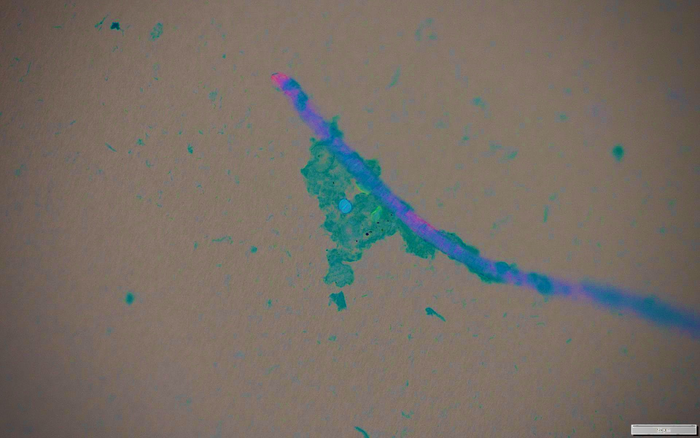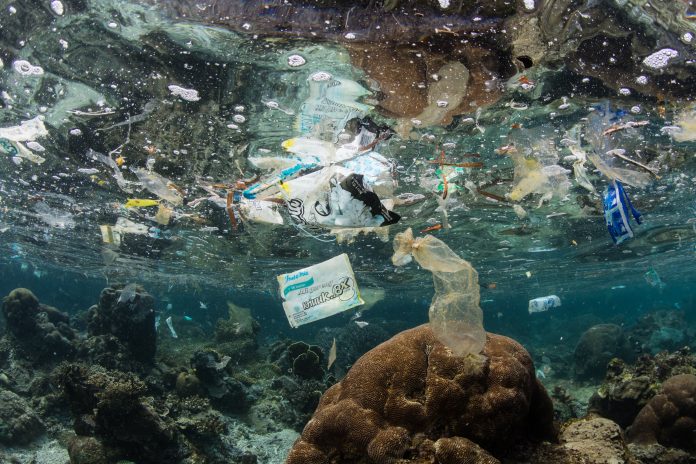Microplastics carrying pathogens into the ocean via land based parasites are affecting wildlife and human health
University of California, Davis researchers have been the first to connect microplastics in the ocean with land-based pathogens. Through their study the team found that microplastics can make it easier for disease-causing pathogens to concentrate in plastic-contaminated areas of the ocean.
Toxoplasma gondii, Cryptosporidium (Crypto) and Giardia—can infect both humans and animals. Crypto and giardia cause gastrointestinal disease and can be deadly in young children and people who are immunocompromised and they are recognised by the World Health Organization as underestimated causes of illness from shellfish consumption and are found throughout the ocean.
It can be “easy for people to dismiss plastic problems”
“It’s easy for people to dismiss plastic problems as something that doesn’t matter for them, like, ‘I’m not a turtle in the ocean; I won’t choke on this thing,’” said corresponding author Karen Shapiro, an infectious disease expert and associate professor in the UC Davis School of Veterinary Medicine.
“But once you start talking about disease and health, there’s more power to implement change. Microplastics can actually move germs around, and these germs end up in our water and our food.”
The dangers of microplastics for humans and animals are significant
Tiny plastic particles known as microplastics are becoming a rising concern with health and climate activists. Being smaller than 5 millimetres, they have contaminated waters as remote as antarctica. By hitchhiking on microplastics, pathogens can disperse throughout the ocean, reaching places a land parasite would normally never be found.
UC Davis and its partners have a long history of research connecting the parasite T. gondii, (a parasite found in cat feces) to sea otter deaths. It’s also killed critically endangered wildlife, including Hector’s dolphins and Hawaiian monk seals. In people, toxoplasmosis can cause life-long illnesses, as well as developmental and reproductive disorders.
“This is very much a problem that affects both humans and animals,” said first author Emma Zhang, a fourth-year veterinary student with the UC Davis School of Veterinary Medicine.
“It highlights the importance of a One Health approach that requires collaboration across human, wildlife and environmental disciplines. We all depend on the ocean environment.”

How do microplastics actually carry pathogens?
Conducting laboratory experiments, the team tested whether pathogens can associate with plastics in sea water. They used two different types of microplastics: polyethylene microbeads and polyester microfibers. Microbeads are often found in cosmetics, such as exfoliants and cleansers, while microfibers are in clothing and fishing nets.
The scientists found that more parasites adhered to microfibers than to microbeads, though both types of plastic can carry land pathogens. The wispy particles of microfibers are common in California’s waters and have been found in shellfish.
According to this research, plastic is making it easier for pathogens to reach sea life, microplastics that float along the surface can travel long distances, spreading pathogens far from their sources on land.
Plastics that sink may concentrate pathogens in the benthos environment, near the bottom of the sea. That’s where filter-feeding animals like clams, mussels, oysters, abalone and other shellfish live, increasing the likelihood of their ingesting both plastic and pathogens.
“When plastics are thrown in, it fools invertebrates,” Shapiro said. “We’re altering natural food webs by introducing this human-made material that can also introduce deadly parasites.”
Reducing plastic waste is key to protecting living beings
Plastic-pollution expert and assistant professor of ecology at the University of Toronto, Chelsea Rochman, listed reducing plastic consumption and pollution as a top priority.
Microfibers are commonly shed in washing machines and can reach waterways via wastewater systems, reducing washing machine usage and single use plastic at supermarkets are a big start.
“This work demonstrates the importance of preventing sources of microplastics to our oceans,” said Rochman.
“Mitigation strategies include filters on washing machines, filters on dryers, bioretention cells or other technologies to treat stormwater, and best management practices to prevent microplastic release from plastic industries and construction sites.”











